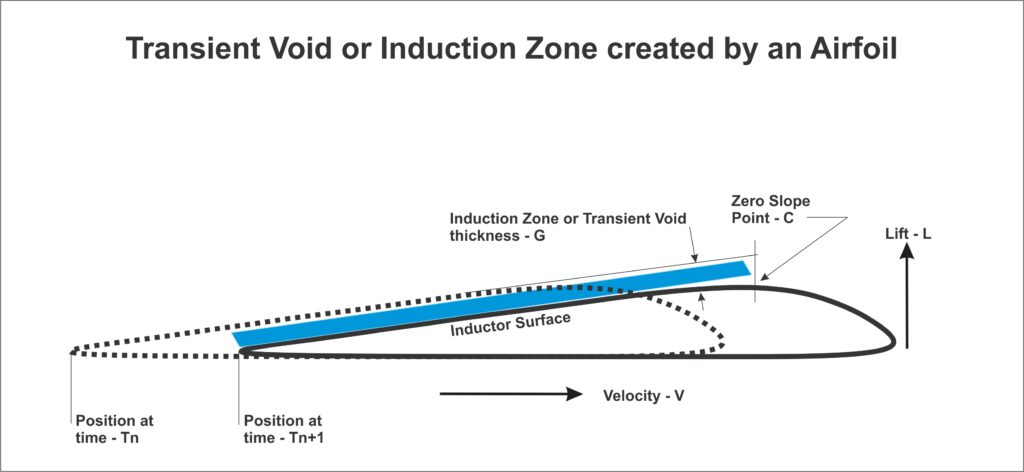The Zone Theory of aerodynamic lift is proved beyond any doubts, by viewing the mystery of flight in the light of well established dogmas of science. Contrary to all common “academic” descriptions, relying on needless mathematical manipulations of intangible and inapplicable quantities, here’s the easiest and most logical explanation of airfoil lift from first principles:
Principle-1: No two objects can occupy the same point in space, at the same time.
Principle-2: No object can transition from point A to B, in zero time.
For the case of aircraft in flight, the first object (airfoil wing) must vacate that space, before other objects (surrounding air molecules) can occupy the same point or region, and the molecules take a finite time to move between two locations in air. They donot have infinite velocity.

Referring to above figure, consider an airfoil wing moving at velocity V from any arbitrary position in air at time Tn, to next position at time Tn+1. In doing so, the wing leaves behind an empty volume of the same shape like itself, shown in dotted lines in figure above. Since that volume has no molecules present in it initially (principle-1), a vacuum is created in the void (blue region) over the wing. The air molecules, no matter how fast their Brownian motion may be, take a finite non-zero time (principle-2), to fill up the volume enclosed in dotted lines, and normalize the pressure, after the wing has moved on to its next position.
The airfoil shaped space in the dotted lines gets completely filled eventually after sometime, after passing of the wing. But as long as the wing is in motion, the lift generating low pressure void of thickness G is always present over the wings, due to the delay in arrival of the molecules in the void.
This low-pressure void is the origin of airfoil lift which is called the Induction Zone by postulates of the Zone Theory.
The value of low pressure in the induction zone depends upon the airspeed of the aircraft, whereby higher the speed higher the vacuum in the induction zone. Therefore, in order to generate sufficient lift exceeding MTOW, the aircraft must run fast enough to create the required low pressure in the void, which is achieved at airspeeds of V1 or greater.
There’s nothing complicated about the phenomena of aerodynamic lift, at all. Things like those mythical Kutta–joukowski theorem and the Navier-Stokes Equations (which have no solution), don’t even come into play, since the “fluid flow” assumption in both these algorithms … is invalid for still air of earth’s atmosphere. Airfoil Lift from First Principles is fully defined.

